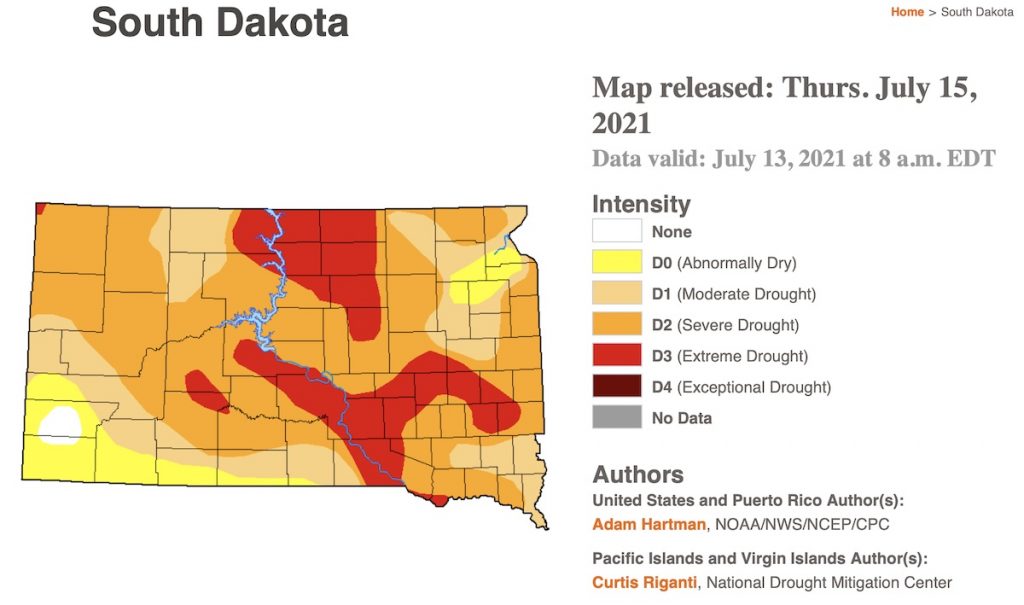With another hot dry spell hitting South Dakota, the drought map will likely only get redder. Last week’s map from the University of Nebraska–Lincoln Drought Monitor showed the driest conditions persisting at the north and south portions of the Missouri River in South Dakota, with an arm of extreme drought reaching out from the River across Highway 34 east to Lake and Minnehaha counties:

Bees don’t like this hot weather. Our sweet little helpers can handle high temperatures, but this year’s heat made flowers bloom early, reducing the bees’ chance to stockpile food. Now the drought is causing crops to produce less nectar, which bees eat for energy.
Drought also makes for worse grasshopper infestations. Grasshoppers and bees don’t directly threaten each other, but Bruce bee magnate Bret Adee says the human response to grasshoppers puts bees at risk:
One major threat to bees Adee spoke of is grasshoppers. The hopping, swarming insects aren’t much of a threat to the bees directly, says Adee. The danger comes from the response to grasshoppers. If the bugs threaten the crops in a region, producers will likely have to counter the threat with pesticides which in turn can harm the bees.
Adee says that farmers need to be conscious of importance of bees to their crops as well and work with beekeepers to make sure pesticides are applied at the proper times and in the correct amounts to avoid causing damage to bee populations [Jacob Newton, “‘Just Like Any Other Livestock’: Drought’s Effect on Beekeeping in South Dakota,” KELO-TV, 2021.07.19].
Pesticides have been disrupting Adee’s bee colonies and other honey producers’ livestock for years. Farmers fighting grasshoppers brought on by the drought may make life for bees and their keepers even harder.
* * *
The lack of bee nectar goes hand in hand with bad crop conditions. The latest crop progress and condition report issued by the USDA yesterday shows poor or very poor conditions for 21% of South Dakota’s corn, 23% of soybeans, 61% of winter wheat, 70% of spring wheat, 50% of oats, and 29% of sorghum. 78% of pasture and range land is also poor or worse; 20% of the pasture is fair, only 2% is good, and none is excellent.
Well…we should all be concerned about bees…they are extremely important to our future on this planet…grew up living next to a “bee man” who came from Louisiana and put his bees out near the alfalfa fields when I was growing up…Bees do very well on alfalfa and alfalfa and other crops thrive around bees. They don’t do well in an environment of “mega-agriculture” with pesticides and herbicides and either do butterflys who have roughly the same job.